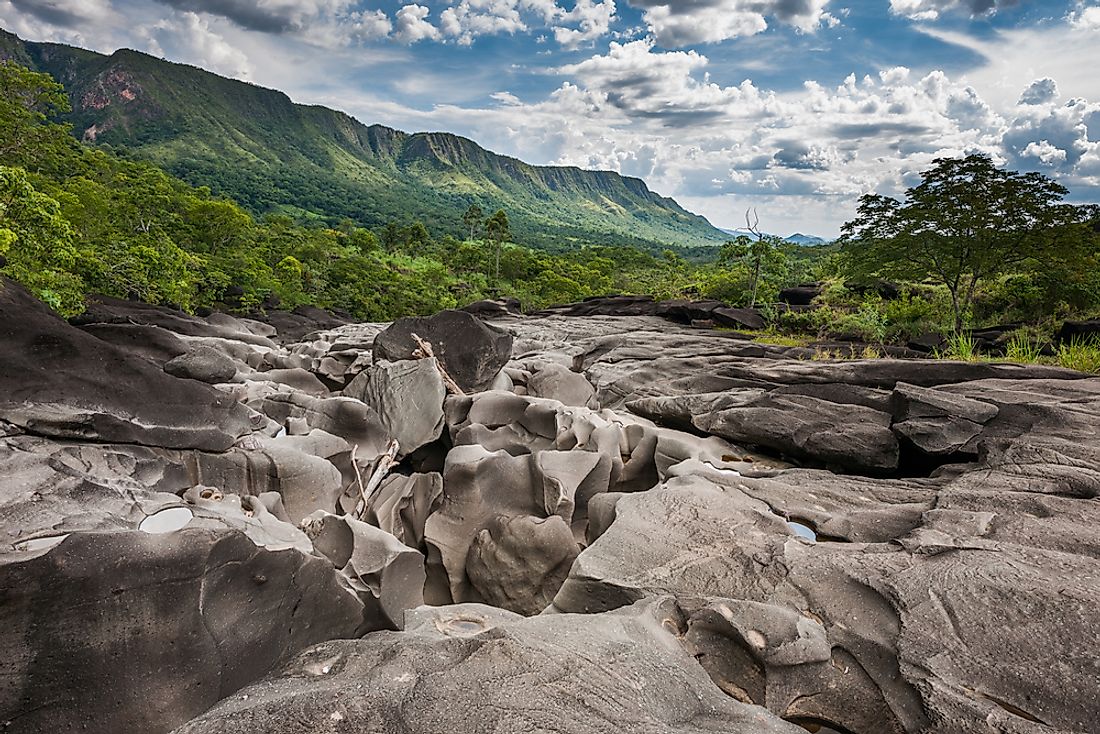What Is A Gallery Forest?

A gallery forest is a stretch of forest along the banks of a river or wetlands flowing in an open country such as deserts, grasslands, or savannas. An open country can either be a treeless area or a region sparsely populated with trees. A gallery forest is also referred to as a riverine forest, fringing forest, or riparian forest.
Description
Gallery forests form corridors along watercourse. The fact that the forests exist in regions which do not support trees has puzzled many, but several factors make the forests’ existence possible. The forests grow in the riparian zone which offers protection from fire occurrences that would be destructive to the tree seedlings. Gallery forests grow in alluvial soils which exhibit better drainage and higher fertility than the soils of the surrounding region and which have a more dependable water supply. The boundary which exists between the surrounding grassland or woodland is usually abrupt while the ecotone is only a few meters wide.
Examples of Gallery Forests
- Llanos ecoregion: This ecoregion encompasses a wide area of savanna and grassland in Venezuela and Colombia. The Llanos ecoregion is home to numerous streams and rivers which support stretches of gallery forests. The Llanos Orientales area is a region of tropical savanna plains in eastern Colombia. River Meta is the main river in this region. Gallery forests have formed along the region’s rivers, and streams, as well as the drainage ways and they are referred to as Esteros.
- Cerrado Region: This region consists of a vast area of tropical savanna in Brazil. Gallery forests occur along the region’s streams, and they serve as a habitat for most of Cerrado’s mammals. The forests are dominated by the families Leguminosae, Rubiaceae, Moraceae, Lauraceae, and Vochysiaceae.
- Gallery forests in Madagascar: several rivers and streams in Madagascar support systems of gallery forests. An example of these waterbodies is the Mandare River which has semi-isolated patches of forests along its length. Tamarind and acacia are the most dominant tree species which form canopies at various points of the river.
- Konza Prairie: This region encompasses tallgrass prairie reserve in the US. The reserve is found in the Flint Hills, located in the northeastern region of the state of Kansas. The reserve is characterized by native tallgrasses which grow over 8 feet. The gallery forests feature such tree species as American Elm, Bur Oak, and Common Hackberry.
Importance of Gallery Forests
Gallery forests are an important aspect of ecoregions as they increase the biodiversity of a biome. In the Cerrado region, for example, the gallery forests act as a secondary habitat for mammals. The gallery forests serve as a dispersion corridor for fauna species which allows animals to move freely in a human-dominated landscape. In some regions, avifauna species use the forests not only for movement but also for foraging and reproduction. Gallery forests have high conservation value.
Threats to Gallery Forests
These forests have been shrinking in various parts of the world. This situation has been triggered by several human activities such as the construction of weirs and dams which have led to flooding and interfered with the natural flow of water. Gallery forests have also suffered destruction from fires and have been affected by livestock grazing, deforestation, climate change, and alien species.











